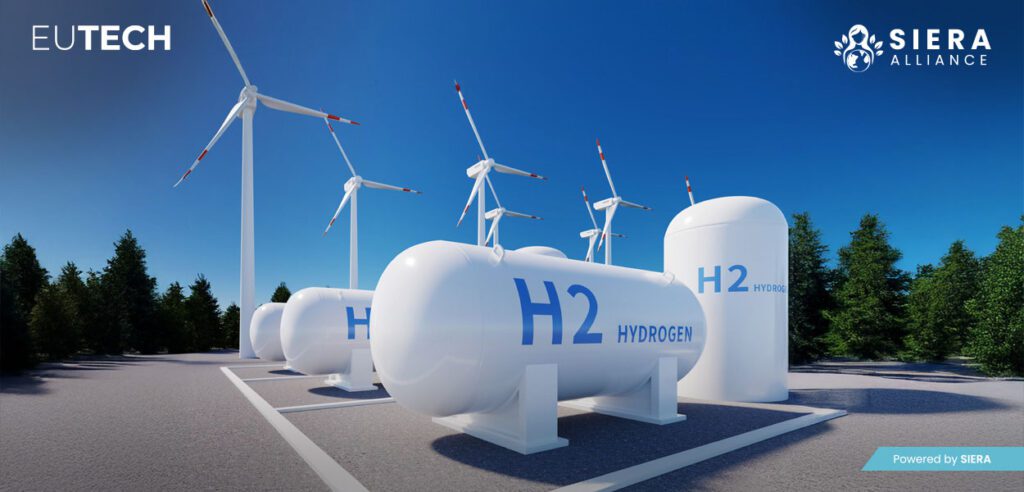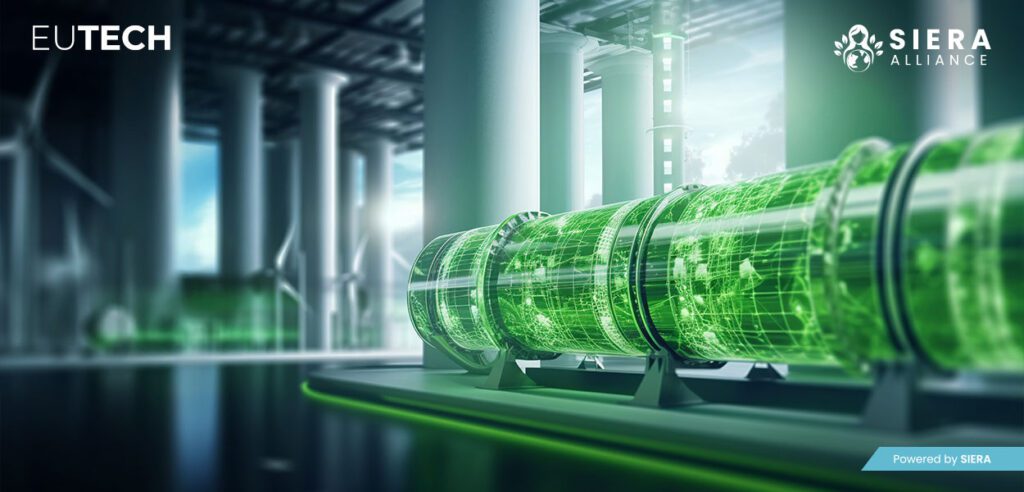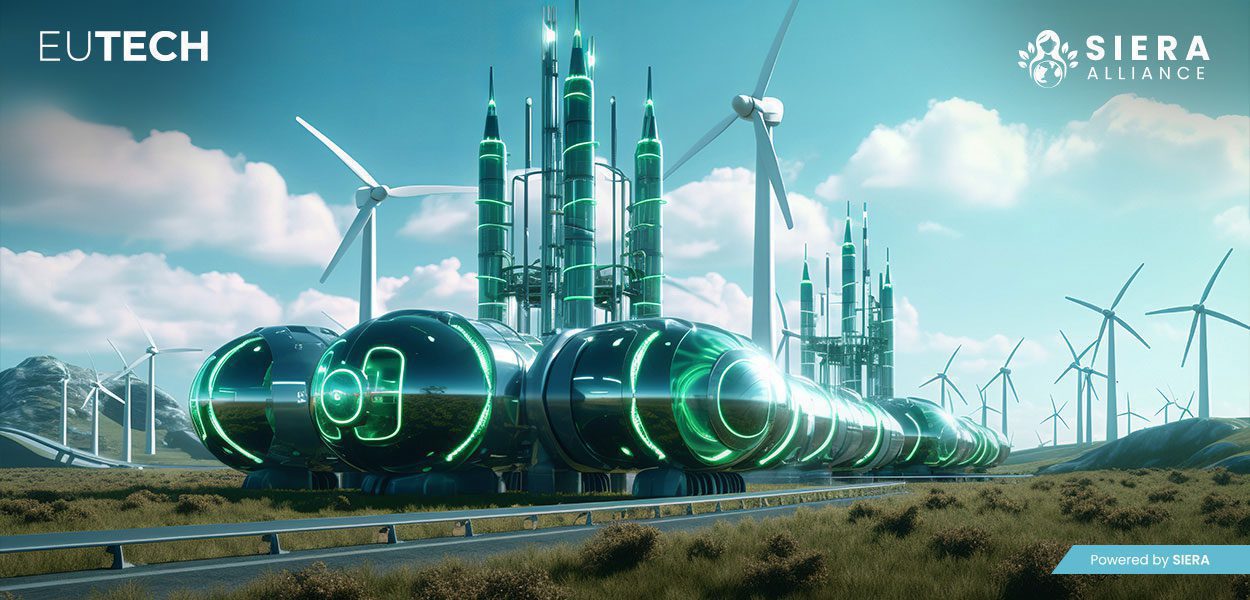The growing traction toward green hydrogen technology is driven by the urgent need for cleaner energy solutions, particularly in sectors that are difficult to decarbonize. Green hydrogen systems offer an innovative solution for these industries, but challenges such as high upfront costs, limited infrastructure, and questions around efficiency remain. In this blog, we’ll explore how green hydrogen production can address these challenges and offer a sustainable energy solution for Europe and beyond.
What is Green Hydrogen Technology?
Green hydrogen is a type of hydrogen fuel produced through the electrolysis of water using renewable energy sources like wind and solar power. Unlike grey or blue hydrogen, which rely on fossil fuels, green hydrogen generates zero carbon emissions, making it key to global decarbonization efforts.
As countries aim for net-zero emissions, green hydrogen technology is becoming essential in the clean energy transition. Governments are investing in green hydrogen projects to create a sustainable future.
How is Green Hydrogen Produced?
Green hydrogen production occurs through a process called electrolysis, where electricity (from renewable sources such as wind and solar) splits water molecules into hydrogen and oxygen.
The result is green hydrogen energy without any greenhouse gas emissions, making it a clean alternative to traditional fossil fuels. The green hydrogen production process is seeing rapid advancements, with the International Energy Agency (IEA) predicting global production to reach 10 million tons annually by 2030.
What is the National Green Hydrogen Mission?
The National Green Hydrogen Mission refers to various national-level initiatives to scale up green hydrogen production. For example, India’s National Green Hydrogen Mission aims to produce 5 million tons of green hydrogen annually by 2030, reducing fossil fuel dependence and positioning the country as a leader in green hydrogen technology.

What are the Benefits of Green Hydrogen?
There are several benefits of green hydrogen:
- Environmental Impact: It produces zero carbon emissions, playing a key role in combating climate change.
- Energy Security: It reduces reliance on imported fossil fuels, enhancing energy independence.
- Job Creation: Large-scale green hydrogen projects, like the World Bank’s $150 million project investment in Chile, are expected to create jobs and stimulate economic growth.
Challenges Facing Green Hydrogen
Despite its potential, green hydrogen faces some challenges:
- High Production Costs: The green hydrogen production process is currently expensive, though innovations are expected to reduce costs by 50% by 2030.
- Infrastructure Gaps: The infrastructure for storing, transporting, and distributing green hydrogen is still underdeveloped, but governments and private companies are investing in green hydrogen systems to address these issues.
Current Green Hydrogen Projects Around the World
Several large-scale green hydrogen projects are underway globally:
- HyDeal Ambition (Europe): Aiming to supply green hydrogen at a competitive price across Europe by 2030.
- Asian Renewable Energy Hub (Australia): One of the largest projects, producing green hydrogen for domestic use and export.
These green hydrogen projects reflect the increasing focus on green hydrogen technology to meet global energy needs.

The Future of Green Hydrogen
As environmental regulations become stricter and renewable energy technologies advance, the demand for green hydrogen will surge. According to the International Energy Agency (IEA) in their Global Hydrogen Review 2022, the production of low-emission hydrogen reached about 0.7 million tonnes in 2021. The IEA projects production could increase to 16-24 million tonnes per year by 2030, positioning green hydrogen as a key player in the future energy landscape.
Green hydrogen’s ability to store and transport renewable energy efficiently addresses the major challenges of achieving a low-carbon future. With declining production costs and growing infrastructure, green hydrogen is expected to become integral to the world’s energy mix, contributing significantly to international climate goals.
Key Policies Supporting Green Hydrogen
Green hydrogen technology has gained traction in policy circles as a crucial element of the clean energy transition. Key policies include:
- European Union Initiatives: The EU has taken a leading role with its ambitious European Hydrogen Strategy. This framework includes:
- Clear targets for integrating green hydrogen into various sectors, from industry to transportation.
- Support mechanisms aimed at creating a favorable environment for innovation and investment in green hydrogen technologies.
- National Strategies: Countries like Japan and Australia are crafting their own policy landscapes to nurture the growth of a green hydrogen economy. Their initiatives often include:
- Research and development funding.
- Infrastructure support.
- Market incentives to encourage private sector participation.
The Role of Green Hydrogen in Securing a Clean Energy Future
Green hydrogen technology presents a renewable solution that can transform industries, reduce carbon emissions, and enhance energy security. As global green hydrogen projects and supportive policies expand, the future of this technology is promising. With continued technological advancements and cost reductions, green hydrogen will play a pivotal role in the global energy transition.
The European Technology Chamber (EUTech) is a strong advocate for these innovations, promoting sustainable solutions to help achieve climate goals and ensure a cleaner future for all.
For more information, visit EUTech.









